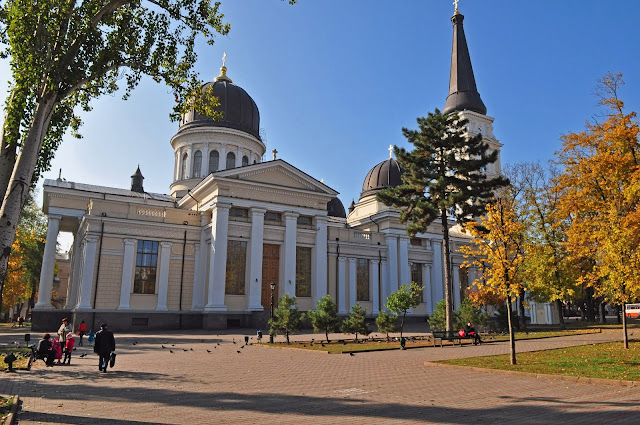Our next stop on our cruise was at Burgas, Bulgaria.
From there we got on a bus that made several stops, some interesting and some not as interesting. The two I found interesting were St. George the Victorious Monastery (Pomorie):
with St. George depicted several times:
St. George was a fairly local boy (a Greek but coming from the Capadoccia region of Turkey) and was a martyr for Christianity. The whole dragon thing was symbolic of fighting Satan. Crusaders took the story back to England, and then he became St. George and the dragon. Throughout our trip in this area of the world we saw numerous depictions on St. George.
The other stop was at Nessebar, a UNESCO World Heritage Site.
It sits on a rocky peninsula on the black sea. (I didn't take this picture!)
Originally a Thracian settlement, the town became a Greek colony in the 6th century BC. It fell under Roman rule in 71 BC and from the 5th century AD was part of the Byzantine Empire. The Turks captured the town in 1453. The Liberation of Bulgaria occurred in 1878. This little city had numerous churches.
This one is the Church of Christ the Pantocrator built in the 13-14th century.
This is the Church of the Holy Saviour (I think!) built in 1609
and is notable for its early 17th century wall paintings.
We were told that under the Turks, Christian churches were not allowed to be built taller than a man on a horse, so they dug down into the ground a few feet so that they could have the tall ceilings of a church they desired, but from the outside it would look like a shorter building. The dirt around the foundation has been removed now to prevent any further deterioration of the structure.
This basilica, Church of Saint Sofia was constructed in the late 5th and early 6th century. It was reconstructed at the beginning of the 9th century, but in 1257 it was looted by the Venetians during a campaign against the Bulgarian Empire.
The Church of St. John the Baptist is one of the best preserved churches in Nessebar and was built in the 11th century. These are some shots of the inside:
On the way home on the bus, I took these two pictures:
I found it interesting that the traffic lights had a countdown displayed to let drivers know how much longer it would be until the light changed. As a cyclist, I would find this very helpful.
I'm pretty sure I won't have a reason to go back to Bulgaria, but it was interesting!
Dear Ainsleigh
9 years ago

























































